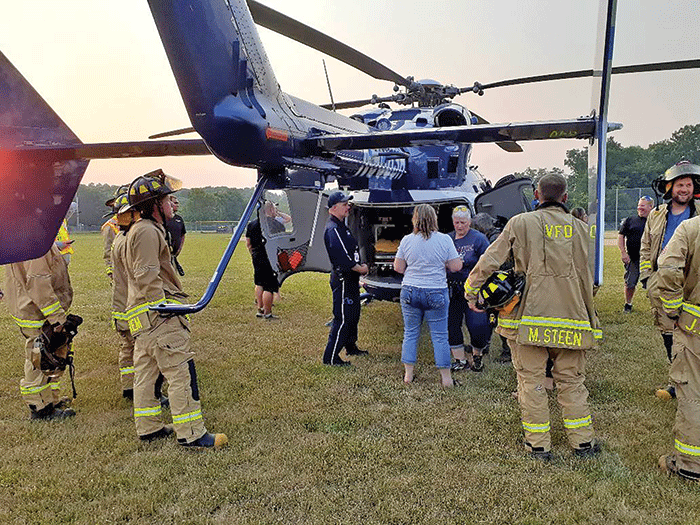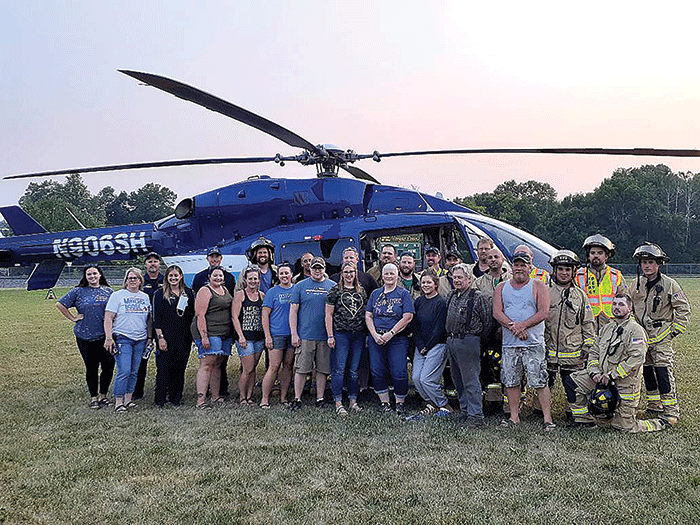AirMED provides training for Vergas Fire and Rescue
News | Published on August 16, 2021 at 4:50pm EDT | Author: Chad Koenen
0
Sanford’s AirMED answered a request for training with the Vergas Fire Department and Rescue teams. They covered optimal landing zones, considerations to be given for patient transport and more.
By Barbie Porter
Editor
The Vergas Fire and Rescue Department held a training with Sanford’s AirMED helicopter unit recently.
Rescue member Kris Thon explained an instructor from the helicopter unit came to their fire hall and rescue garage to provide classroom instruction before they were allowed to put their newly gained knowledge to use.
She noted they focused on how to help the chopper land safely during an emergency situation by preparing an impromptu landing zone. There were different methods depending on the time, but at night she said parking four vehicles in a square pattern with their lights shinning toward the center is the way to go. If there are not enough vehicles, cell phone lights could do in a pinch.
As for the landing area, the crews learned what to be mindful of for the helicopter safety at potential landing zones, from a field to a gravel road.
“Are there power lines? Will the gravel be safe to transport a patient from the cot to the AirMED? What material will be kicked up by the blades? Is the field plowed?” Thon asked, noting these are now questions that will go through the first responder’s minds should they need Sanford’s helecopter transport services.
The fire and rescue members were also told the protocol of calling in AirMED. Thon said the rescue crew are not EMTs, meaning they have restrictions on what they can do with patients as they don’t hold certain certifications. Most of the time, the EMTs who respond will call the chopper, if needed. However, if the Vergas Rescue arrives and sees a dire situation, they were encouraged to call in AirMED.
“If they don’t land, there is no cost,” she said. “So, we were told, if there is a question if they are needed or not, to just call.”
Thon said the training opportunity concluded with the crew heading out to the Vergas Baseball Field and conducting a live training session with AirMED. One interesting tidbit she learned was the chopper may only turn the engine off temporarily during a call.
“When the two EMTs jump out (of the helicopter), they start the engine to make sure it will be running at higher RPMs,” she said.
Inside the chopper the crew learned it is a fully stocked emergency room.
“It’s unbelievable how much they have in there,” Thon said.

The Vergas Fire and Rescue teams posed with the AirMED crew and chopper during a training session with the Sanford emergency team.

